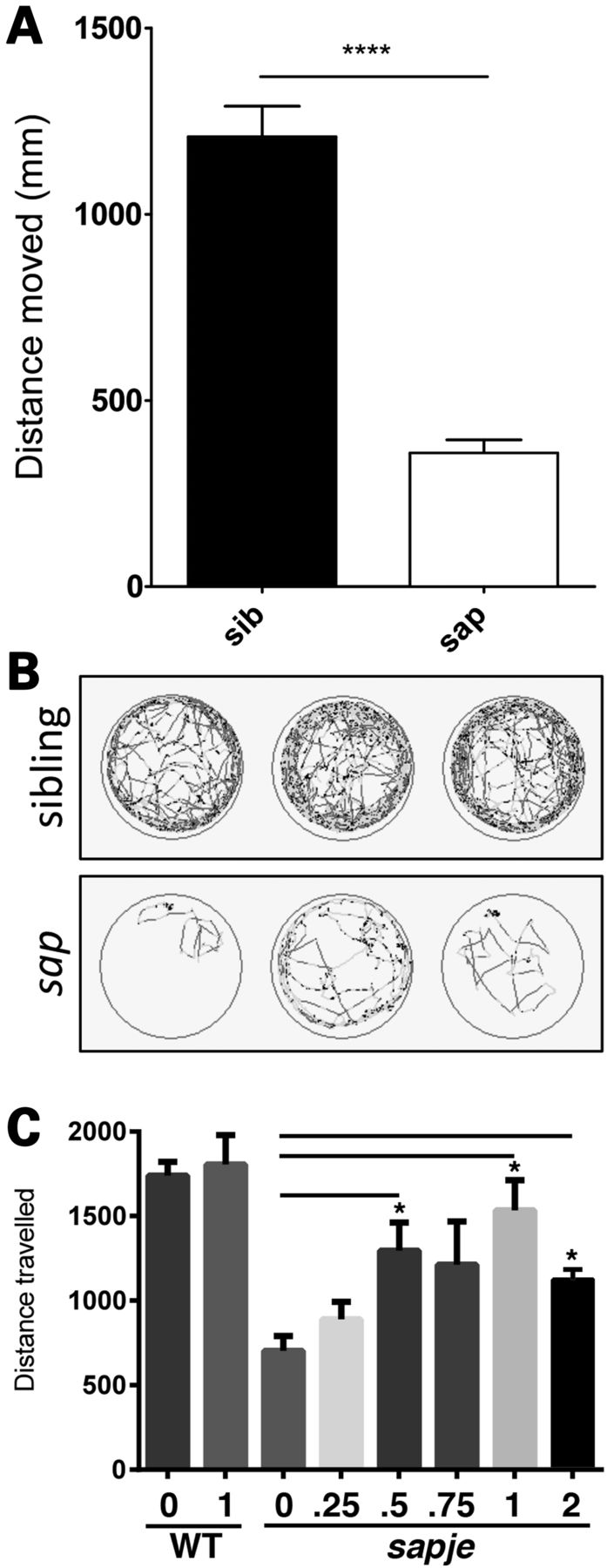Fig. 8 Dasatinib treatment rescues swimming ability in sapje larvae. Using ViewPoint video tracking and analysis, the overall distance moved by sapje larvae is significantly lower compared with wild-type siblings (A, P < 0.0001). Each bar represents mean tracking data from 36 larvae from three separate multiwell plates, and error bars represent SEM. (B) Representative traces for three sapje (sap, bottom) and three sibling larvae (top), light grey traces represent periods of fast movement and dark grey periods of slow movement. (C) Sapje and control larvae were treated with the indicated concentrations of dasatinib (μM), or DMSO only, from 3 to 5 dpf. Dasatinib has a dose-dependent effect in increasing swimming duration compared with vehicle-alone up to a maximum concentration of 1 μM. One micromolar dasatinib had no effect on swimming activity of wild-type zebrafish. One-way ANOVA analysis of ViewPoint tracking data indicated a significant increase between dasatinib-treated and control groups for the distance moved (one-way ANOVA: F = 3.188, df = 2.69, P = 0.0474, followed by Dunnett′s multiple comparison test: *P < 0.05, ns = non-significant).
Image
Figure Caption
Figure Data
Acknowledgments
This image is the copyrighted work of the attributed author or publisher, and
ZFIN has permission only to display this image to its users.
Additional permissions should be obtained from the applicable author or publisher of the image.
Full text @ Hum. Mol. Genet.

